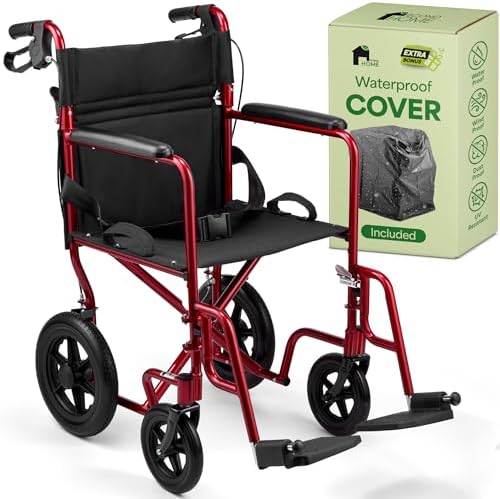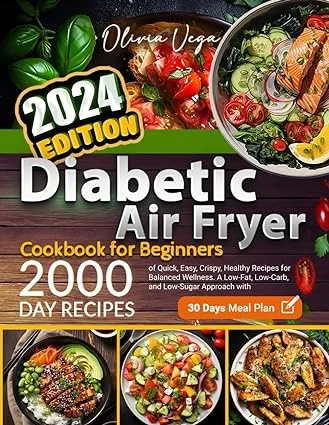Maintaining reliable mobility becomes increasingly important as individuals move into later stages of life. A mobility aid often restores comfort, safety, and confidence, yet rising equipment prices make access difficult for many older adults. Fortunately, numerous programs, community-based initiatives, and nonprofit groups connect aging individuals with affordable or no-cost mobility solutions.
This guide breaks down every realistic path to securing a free wheelchair, including eligibility, how to apply, timelines, and tips for increasing your chances of approval. Whether you’re a caregiver searching on behalf of a parent or a senior looking for assistance yourself, this comprehensive resource gives you the clear, step-by-step information you need.
Why Free Wheelchair Programs Exist
Acquiring mobility devices can create financial strain, particularly for individuals living on fixed monthly income. Prices for manual models commonly range from moderate to high, while powered chairs often exceed several thousand dollars. Many aging adults face challenges when navigating insurance rules, copayments, or rigid documentation demands. In response, community groups, charities, assistive-technology programs, and local donation networks continue working to place unused or refurbished equipment into homes where mobility support is urgently needed. These systems ensure that aging adults maintain access to movement, social interaction, and daily independence without overwhelming expenses.
Types of Wheelchairs Seniors Can Get
Support programs provide several categories of mobility equipment, each suited for different physical needs or activity levels. A standard manual device works well for individuals who require steady assistance during daily routines. Transport models offer a lightweight alternative that caregivers can maneuver during appointments or short outings. Bariatric versions serve individuals who benefit from reinforced frames and wider seating areas. Some programs also supply scooters for community travel or longer distances. More advanced devices, including power-driven models or tilt-in-space seating systems, may be available through reuse centers, charitable groups, or medical-equipment recyclers. Availability depends on donation cycles and regional inventory, yet many organizations maintain a broad selection of devices for older adults.
Nonprofit Organizations That Provide Free Wheelchairs
Many established charitable groups operate nationwide programs that pass refurbished devices to older adults at little or no cost. Organizations such as Wheelchair Foundation affiliates and American Wheelchair Mission partners distribute assistive mobility equipment through community events, church outreach programs, and senior-service agencies. United Cerebral Palsy chapters in several states maintain reuse centers where donated devices undergo cleaning, inspection, and adjustments before entering circulation again. Rotary chapters, along with other civic groups, frequently sponsor donation drives, allowing residents to contribute unused equipment that still carries long-term value. These community efforts form one of the strongest support systems for individuals seeking dependable mobility solutions without major financial commitments.
Local Medical-Equipment Loan Closets
Many cities and towns operate loan closets filled with donated mobility devices. These inventory centers often sit within senior centers, churches, local Lions Clubs, volunteer projects, or county aging-service offices. Loan closets usually provide fast access, often requiring only a brief phone call or simple walk-in request. Older adults can obtain manual models, transport chairs, or scooters, depending on availability. Many loan closets encourage long-term use without fixed return dates, ensuring individuals have ample time to rely on their mobility aid. Since equipment arrives from hospitals, families, and community donation drives, local closets frequently offer larger inventories than large national charities.
Assistive-Technology (AT) Programs in Every State
Every state operates an Assistive-Technology Program designed to increase access to devices that support independence. AT programs manage reuse centers, lending libraries, and device-demonstration sites where older adults can examine different mobility options before choosing one. Many states accept donated power-driven models, refurbish them, and distribute them at reduced or no cost. These programs typically come with minimal eligibility restrictions, allowing any aging adult to request assistance. States such as New York, California, Florida, and Ohio maintain especially active reuse networks, often processing requests within several weeks.
Insurance Options for Older Adults
Medicare and Medicaid often reduce or eliminate costs associated with acquiring a mobility device. Medicare Part B assists individuals who require equipment for essential daily functions inside a residence. A practitioner’s order is required, along with an evaluation from a supplier enrolled in Medicare’s system. Medicaid programs in many states provide broader coverage, approving a range of devices that support mobility, posture, or seating needs. Individuals with dual Medicare–Medicaid status often receive full coverage once documentation is completed. Those who qualify for both programs may face little to no personal cost for manual or power-driven models.
Support for Veterans
Aging veterans may access mobility equipment through benefits offered by Veterans Health Administration. VA facilities supply manual, powered, and specialty models when a practitioner confirms medical necessity. Many veterans’ service organizations, including VFW, American Legion, and Disabled American Veterans, operate donation programs, delivering mobility equipment directly to older service members. Some groups provide in-home fittings, delivery services, and guidance regarding additional benefits that support long-term independence.
Faith-Based Organizations and Community Ministries
Many churches, mosques, synagogues, and religious-affiliated charities sponsor outreach programs focused on mobility assistance. Faith-based groups often run donation drives and maintain storage spaces filled with gently used devices. Older adults in need may receive rapid help simply by contacting community-outreach directors or pastoral-care offices. Volunteers in these communities frequently arrange delivery or help families transport equipment home. Because faith-based groups operate without strict administrative delays, many older individuals find assistance faster through these networks than through larger formal programs.
Online Community Listings and Neighborhood Networks
Digital community platforms often host large numbers of mobility-device donations from individuals who no longer need them. Websites such as Facebook Marketplace, Nextdoor, Freecycle, and Craigslist feature hundreds of local postings every month. Older adults or caregivers can search for terms associated with mobility aids and often find available items in nearby neighborhoods within hours. Pickup arrangements are straightforward, requiring only direct communication with individuals offering equipment. Many caregivers rely on these online networks because they eliminate paperwork and approval hurdles associated with more formal systems.
Hospitals, Rehabilitation Facilities, and Home-Support Agencies
Hospitals and rehabilitation centers frequently retire equipment that remains fully functional. Some facilities donate unused devices to families once a patient receives a newer model or no longer needs mobility support. Home-support agencies sometimes maintain temporary loaner inventories that clients can use during recovery periods. Although availability varies by region, making inquiries at local medical facilities often uncovers additional opportunities for securing affordable mobility equipment.
County Aging Offices and Senior Centers
Area Agencies on Aging operate in every county across United States and serve as valuable information hubs for older individuals. Staff members often maintain updated directories listing regional donation programs, reuse centers, and loan closets. Many senior centers collect donated equipment from residents and distribute these items to those with urgent mobility needs. County offices also organize emergency-assistance initiatives that distribute mobility devices to older adults following hospital releases or sudden changes in physical ability.
How Seniors Can Increase Their Chances of Receiving a Free Wheelchair
Older adults can increase success by pursuing several resources at once. Reaching out to loan closets, nonprofit groups, and local faith communities simultaneously shortens waiting periods. Keeping basic documents ready, such as identification, address verification, or medical notes, helps organizations process requests faster. Many programs also respond more quickly when individuals express openness to different types of devices instead of requesting rare or highly specialized models. Contacting organizations early in each month is also useful, as donation cycles often peak during that period.
Common Questions About Mobility Aid Assistance
Many individuals wonder how long acquisition typically takes. Loan closets often provide immediate access, while nonprofit groups and reuse centers usually deliver equipment within several weeks. Insurance-based options may require more time due to documentation review. Most donation programs do not require a prescription; however, insurance-backed programs do. Caregivers are generally permitted to collect devices on behalf of older relatives, making transportation or scheduling much easier. Devices distributed through reuse programs undergo thorough cleaning and inspection, ensuring safe long-term use.
Step-by-Step Guide: How a Senior Can Get a Free Wheelchair Today
A practical approach begins with contacting nearby loan closets or senior centers, since these resources usually provide immediate access to manual or transport models. Next, reaching out to a state’s Assistive-Technology Program allows older adults to request refurbished power-driven models or specialized seating systems. Searching online community marketplaces can uncover additional options from nearby residents. Faith-based groups, Rotary chapters, and Lions Clubs often respond quickly to mobility requests. Individuals with coverage through Medicare, Medicaid, or VA benefits should speak with practitioners to initiate documentation for a cost-reduced device. Applying to nonprofit organizations and reuse networks further expands available options, increasing likelihood of receiving suitable mobility support within a short timeframe.
Conclusion
Access to safe and reliable mobility equipment remains essential for older adults seeking independence, confidence, and community involvement. A wide range of formal and informal programs—spanning charities, state agencies, online communities, senior-service networks, and neighborhood organizations—work continuously to place unused or refurbished devices into households where mobility support creates life-changing impact. With patience, persistence, and a willingness to explore multiple sources at once, older individuals can secure the mobility aid needed to remain active, connected, and comfortable throughout daily life.







